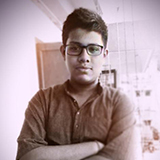Maa Phire Elo - the Durga Museum of Rabindra Sarovar - GetBengal story
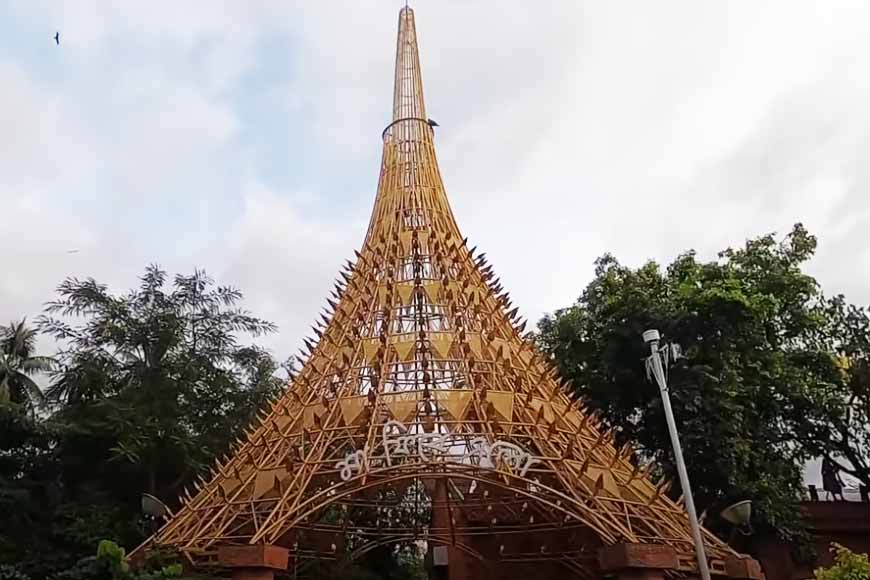
Maa Phire Elo - main gate
It has been half a month since Durga Puja ended. Though everyone has returned to their daily routine, still at heart every Bengali yearns for those Puja days and wishes that they continue a bit longer. Last year Durga Puja was recognised as a cultural heritage by the UNESCO World Heritage Centre, which is why this year the organizers went out of their way to make grand celebrations. The deity was royally welcomed and the decorations were mesmerizing. The crowd had started gathering in the puja pandals since Mahalaya this year. The Pujo Carnival was in full swing and Red Road was filled with the parade of different themed pujas and their deities. The bustling city suddenly subsided but the pujo fever took time to leave the Bengalis.
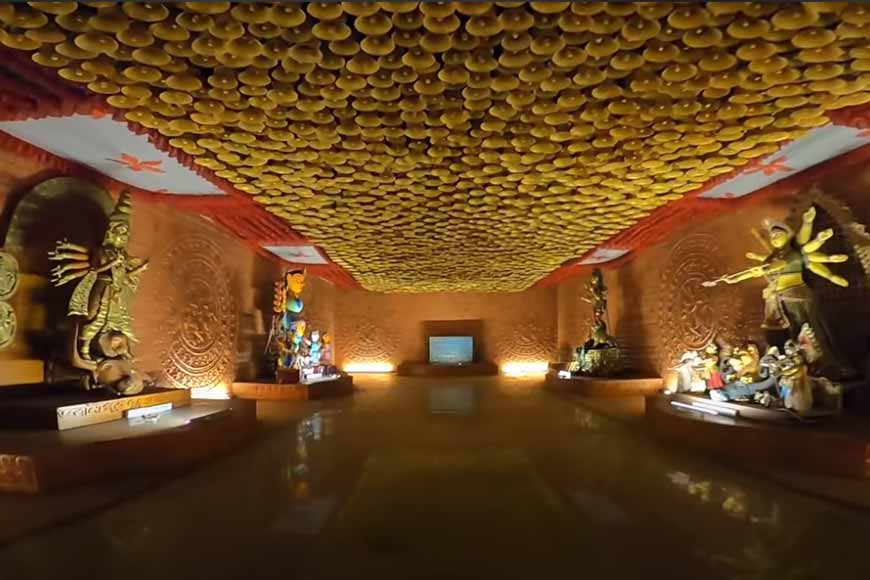 Interior of the Durga Museum
Interior of the Durga Museum
Every year, all the big and small pujas amount to around 6000 in number. Evidently, it is not possible for every person to go around the city and watch each and every puja pandal. As the puja ends, these artistically handmade anthropomorphic forms of the deity are immersed in the water. The pandals which are laboriously given shape to by artists and workers are dismantled. Overall, it is wastage of artworks. The last few years saw a bit of change. In recent times, some of these beautiful idols were kept in hotels or resorts to enhance the beauty of the surroundings. Some idols are also being kept at parks and metro stations for the common people. But they are very scarce. With such initiatives, it is not possible to preserve all the idols.
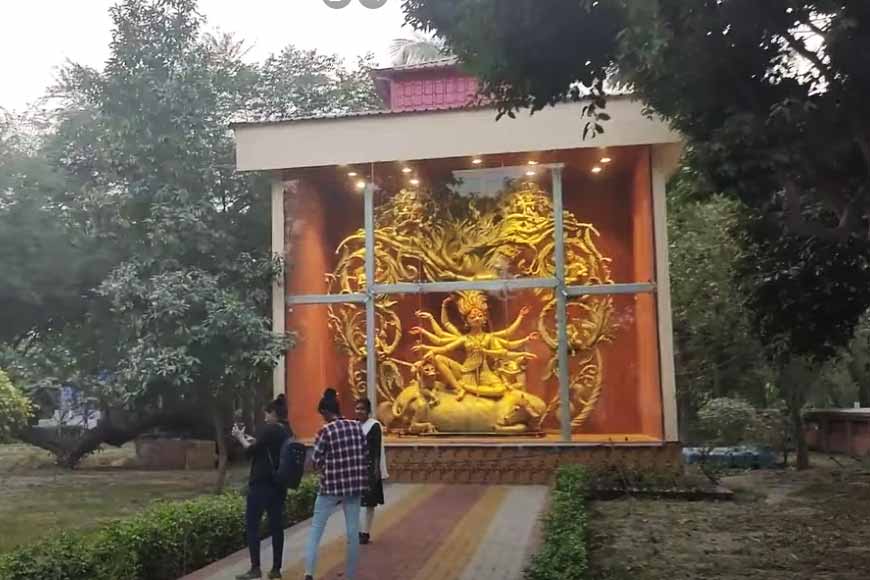
With the initiative of the State government and the Kolkata Municipal Corporation, a museum has been created in Dhakuria Lake/Rabindra Sarovar. The aim behind creating this museum was to preserve some of the best idols of Maa Durga from the puja pandals. In the museum, the idols can be seen throughout the year- which is why the museum is named “Ma Phire Elo”. This museum, situated at the southern end (the second gate) of Rabindra Sarovar stands as the holder and bearer of Bengali’s biggest festival.
The museum is quite famous among the locals though many of us are not aware of the same. In the museum resides the idols of – Chetal Agrani (2020, by artist Anirban Das), Bakulbagan Sarbojonin (2017, by artist Bimal Samanta), Alipore 78 Pally (2019, by artist Abhijit Ghatak), Bhowanipore 75 Pally (2017, by artist Biman Saha), 74 Pally Khidirpur (2020, by artist Nirmal Mullick) and many others. The museum is open from 7-9 am and from 3-5 pm, every day. There is free entry as no ticket is needed to go inside this museum and photography is not prohibited. After entering the museum, the huge terracotta lamps at either side of the gate can be seen along with an ornate tower standing in the front. On the tower the name of the museum- “Ma Phire Elo” glows bright. After walking a bit, three Durga Idols can be seen in a row. Among them the eye-catching idol is that of Chetla Agrani, 2017. Some of the idols have the year and the artist’s name written under them but it is not found in most of the idols.
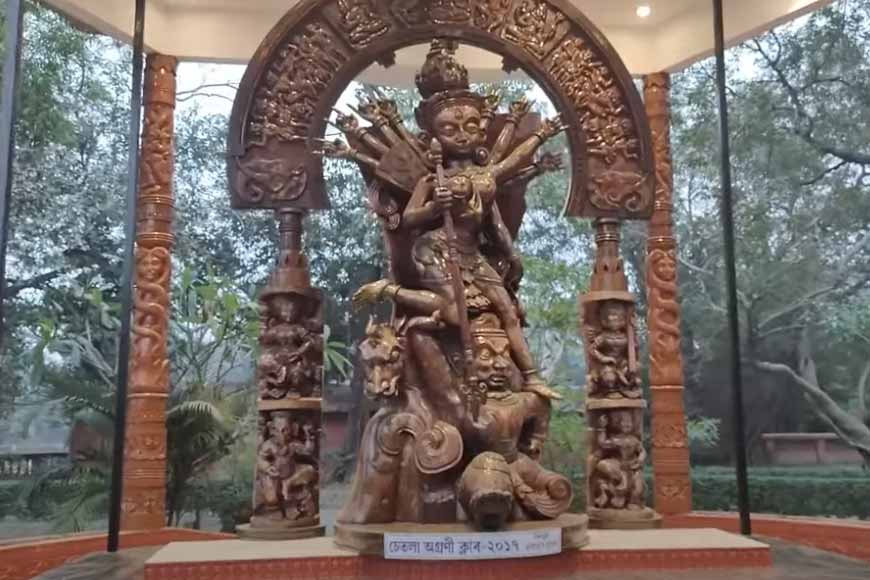 Chetla Agrani's idol of the year 2017
Chetla Agrani's idol of the year 2017
One of the attractions of this museum is the Durga idol made of coloured chalk. This idol was made in the year 2022 by Jitendra Smriti Sanga. The talented artist Swapan Sarkar is the creator of this wonderful piece of art. The idol was made of a special type of chalk. Swapan Sarkar had brought these coloured chalks from Mumbai. But the Durga idol is not his first creation made up of those chalks, he had made an idol of Ma Saraswati around 15 years ago. When the puja organizers had asked Swapan Sarkar to make something totally different at that time it struck him to make a Durga idol with coloured chalks. The idol was made by Swapan Sarkar and 9 women, the 10 of them had to work day and night for 3 months to make the idol. The theme of puja that year was “Lakshya” or “goal”. According to him, “the main key to attaining any goal in life is education and education starts with chalks, which is why he came up with the idea of making the idol with chalks.”
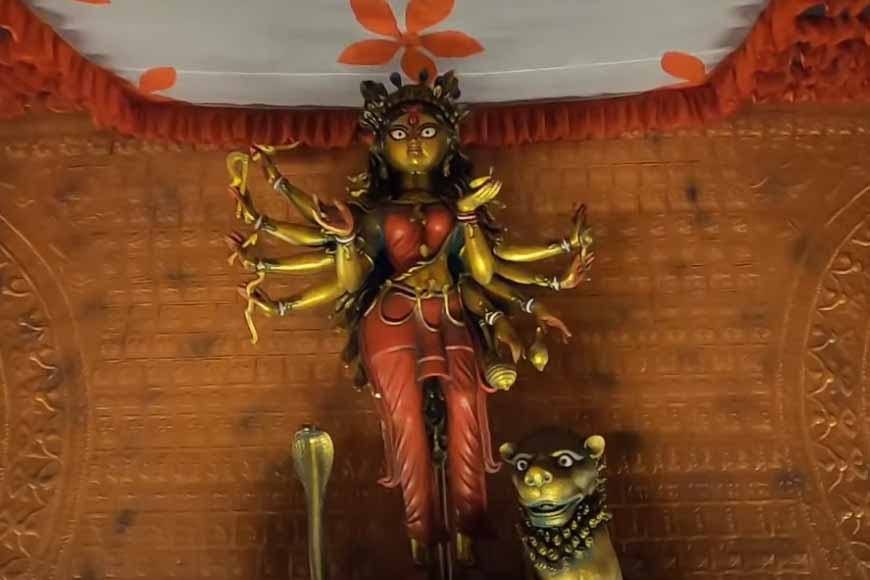
Swapan Sarkar says: “These beautiful and aesthetic creations of artists can be preserved for long due to the initiative of the State government.” He hopes that people can see his work even after 15 or 20 years, which would have been impossible if the idol was immersed. Many people come across the idol made by him and appreciate his work over the phone.
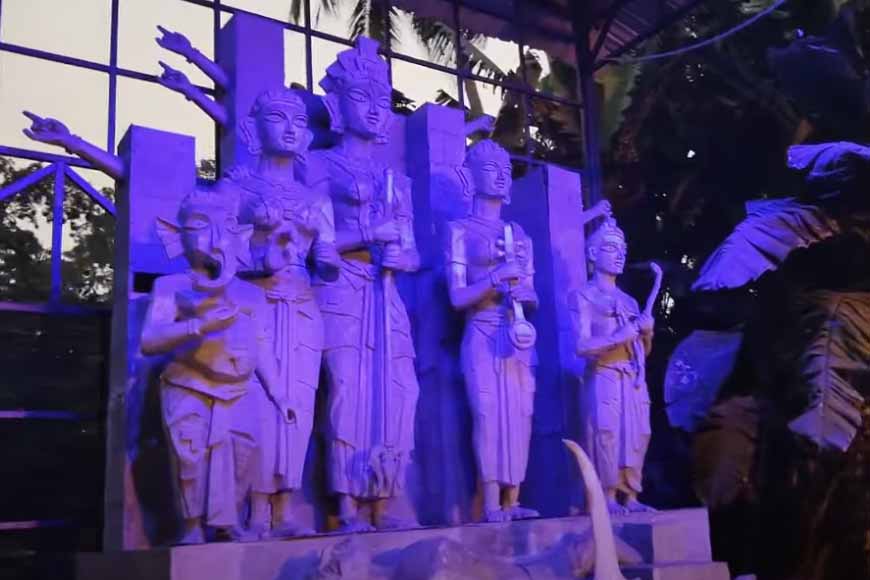
Artist Nirmal Das said, “Without any doubt, this was a great initiative by the State government. This museum is playing a very important role in preserving the history and culture and helps others in understanding how the Durga puja takes place in Bengal.” With the recognition from the UNESCO World Heritage Centre, more people will come to this museum, according to him. Samaresh Bhaduri comes to the Dhakuria lake every day for a walk. He has said that whenever he gets time, he visits the museum. According to him, the museum has two advantages- one, at this age it is no longer possible to push through the crowd to see the pandals and the idols. This museum gives a pandal-like feeling. Secondly, those people who cannot visit Kolkata during Durga puja can still be able to see the idols. He said, “My son and his family lives in Copenhagen. Durga pujas in large numbers are organized in America, Australia and Britain but in Denmark it is not the same. My granddaughter got to know about Durga puja from us and from pictures she saw on Facebook. When they visited Kolkata, I brought them to this museum and showed the idols.”







